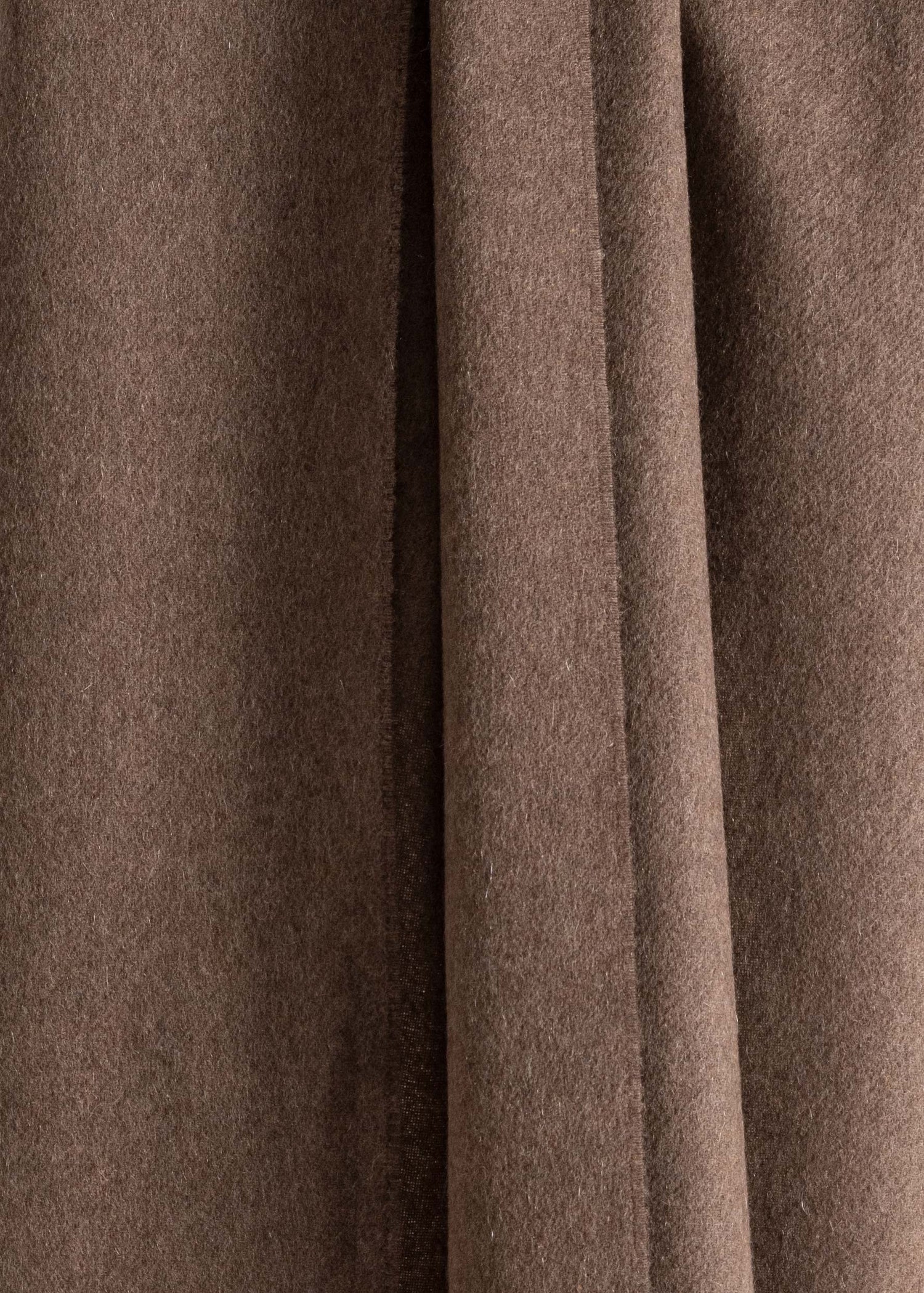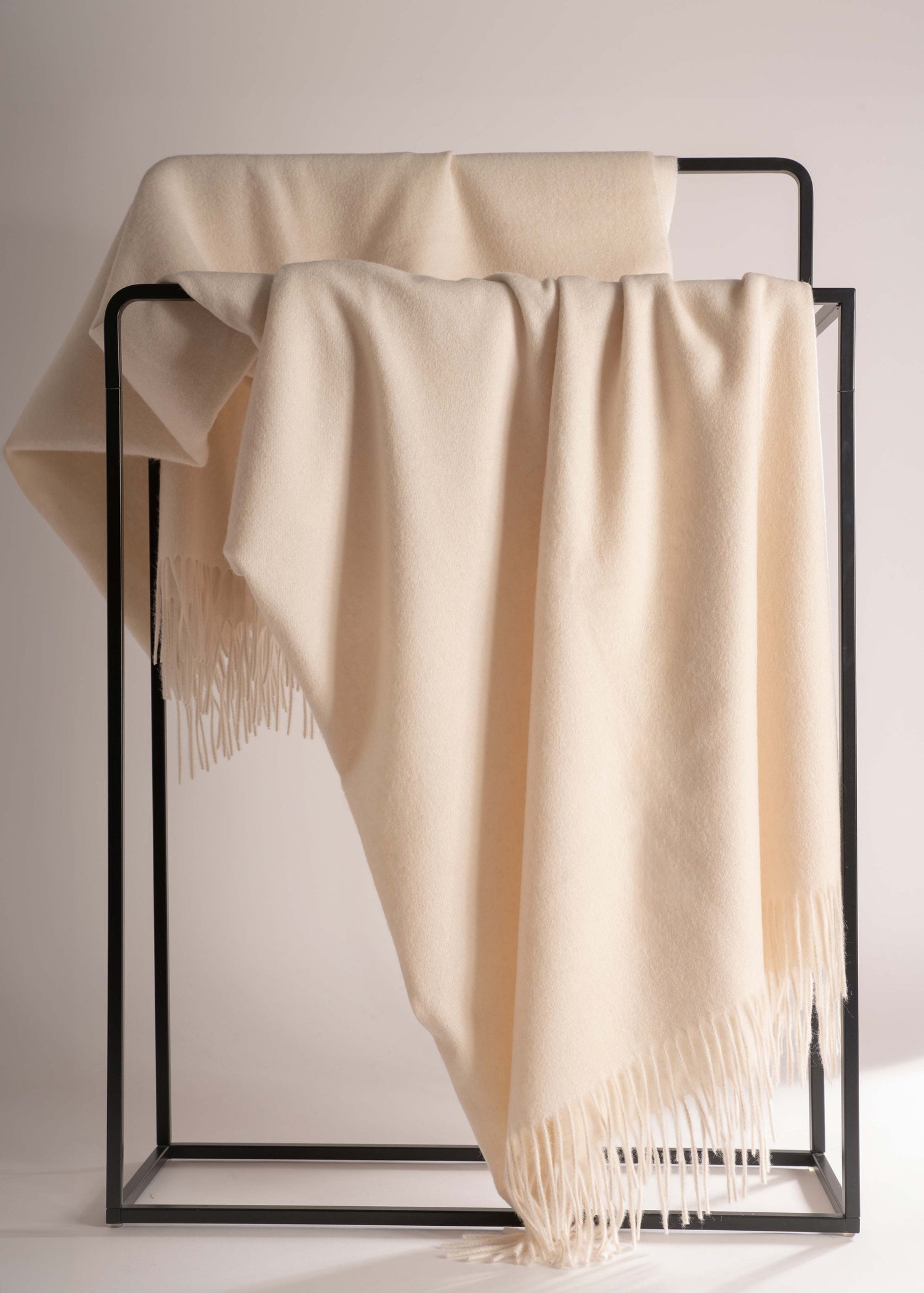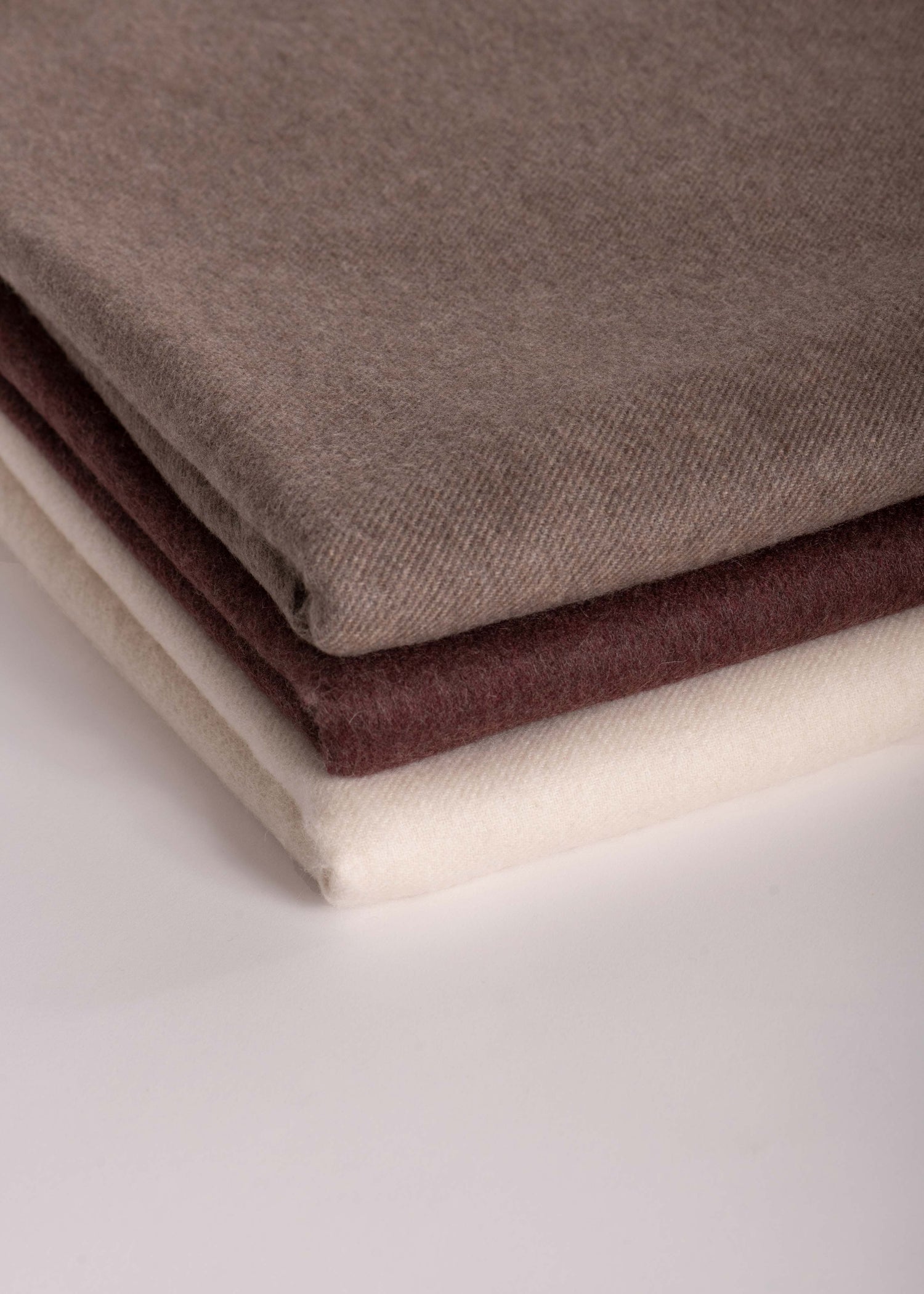
CASHMERE CARE GUIDE: HOW TO WASH, STORE, AND PROTECT YOUR CASHMERE
Cashmere is a natural, noble, and rare material with exceptional properties. We talk about it in detail here. And as with any exceptional fiber, it deserves proper care. Here’s everything you need to know to preserve the beauty of your cashmere garments and throws — and extend their lifespan.
Note: all of our care recommendations for cashmere also apply to garments made of wool or wool blends.
HOW TO WASH CASHMERE: MACHINE OR HAND WASH?
You can wash your cashmere garments by hand or in the washing machine — with the exception of the moiré scarf and the cashmere-silk stole, which must be dry-cleaned by a professional.
MACHINE WASHING CASHMERE: STEP-BY-STEP INSTRUCTIONS
- Protect your cashmere with a laundry bag
We recommend using a laundry bag to prevent any snags or friction damage inside the drum. You’ll find several organic cotton options in different sizes on the market. Make sure not to overload your washing machine.
- Use the right cycle
Select your machine’s WOOL program and make sure to wash your cashmere at cold temperature.
- Choose your detergent wisely
Choosing the right detergent is crucial. Use a special cashmere shampoo or a wool-specific detergent, and only in small amounts. Avoid standard detergents or fabric softeners — they can damage the fibers and cause felting.
- Spin gently
Use the gentlest spin cycle possible — no more than 400 rpm.
- Never tumble dry
The heat and movement of a tumble dryer are too harsh for delicate fibers like cashmere. It would irreversibly damage the texture, shape, and softness of your garment.
HOW TO DRY A CASHMERE GARMENT
Remove your garment from the laundry bag and lay it flat on a drying rack to prevent stretching or warping. Pay special attention to the sleeves — lay them along the body of the sweater and never let them hang, as the weight of the water can permanently distort the shape.
HOW TO HAND WASH YOUR CASHMERE SAFELY
Place your garment in a basin filled with cool or lukewarm water and add a few drops of a cashmere-specific shampoo or a gentle wool detergent.
Gently lather and clean the garment, then rinse with clean water — ideally in a second basin. Avoid letting your cashmere soak for too long.
Empty the basin and carefully press the water out of the garment without wringing or twisting the fibers. Lay the garment flat on a clean towel, roll it up, and press lightly to absorb as much moisture as possible.
Finally, lay your cashmere flat on a drying rack, following the same instructions as above in the Machine Washing section.
STEAMING AND IRONING CASHMERE WITHOUT DAMAGE
Cashmere fibers are delicate and sensitive to direct heat. In most cases, a simple burst of steam without direct contact with the fabric is enough to smooth out wrinkles. If ironing is necessary, use the "wool" or "delicates" setting on your iron and always place a thin cloth (pressing cloth) between the iron and your garment to avoid direct contact with the hot soleplate.
PROTECTING CASHMERE FROM MOTHS: NATURAL AND EFFECTIVES METHODS
These keratin-eating insects are particularly fond of wool, with a strong preference for delicate and luxurious fibers like cashmere or silk.
- A clean, dry, and well-ventilated wardrobe
The first step is to regularly air out your wardrobe and, if possible, let in some natural light. Moths thrive in dark, warm, humid, and undisturbed environments. Keeping your storage space clean, dry, and cool is an essential form of prevention.
- Natural repellents
Moths dislike strong smells, which act as natural deterrents. Cedarwood is a traditional choice. You can also use lavender sachets or essential oils such as eucalyptus, thyme, or lavender. It’s important to refresh these scents regularly to maintain their effectiveness. Cedar blocks should be lightly sanded each season to release their aroma, and you can even add a few drops of cedar essential oil. When using essential oils, always check the proper precautions and avoid direct contact with textiles to prevent staining.
- Proper storage of garments
Spring is when moths resume laying eggs — and also when we typically store away our winter clothing. Always store clean garments: wash them first, then place them in clean, securely closed containers. You can add natural repellents as well, following the same precautions mentioned above.
CASHMERE PILLING: HOW TO PREVENT AND REMOVE IT
Pilling appears due to friction, especially on high-contact areas such as the sides of a sweater, underarms, or a scarf or collar rubbing against a beard.
If you hold a strand of wool, cashmere or non-mercerized cotton between your fingers, you’ll notice tiny fibres sticking out from the yarn. These surface fibres rub against one another and tangle over time, forming pills.
Why Fibre Quality Makes All the Difference
Some garments are more prone to pilling than others, depending on the fibre composition and yarn quality. For example, blends that mix wool with synthetic fibres like acrylic have a high risk of pilling. So do low-quality natural yarns. On the other hand, mercerized cotton—like the one we use for our Scotland Lisle thread socks—has virtually no risk of pilling. The mercerization process removes surface fibres, leaving a smooth, durable thread.
Similarly, high-quality natural fibres, like those used in all our garments, are much more resistant to pilling. Their long-staple or extra-long-staple structure helps the yarn remain smooth and compact, significantly reducing the chances of fibres breaking free and forming pills.
How to safely remove pilling from cashmere?
The most effective method is to use an electric fabric shaver. Several models are available on the market, and they tend to work much better than manual combs. Use it gently: avoid pressing the device too hard against the fabric to prevent damage. The motion should stay light and gliding across the surface
TRAVELLING WITH CASHMERE: HOW TO PROTECT YOUR PRECIOUS KNITS AND AVOID DAMAGE
When packing, we recommend using fabric pouches to compartmentalize your items inside your suitcase. A pillowcase works well too. This helps prevent snags from zippers or exposure to accidental spills during transit.
REPAIRING AND RECYCLING CASHMERE: SUSTAINABLE SOLUTIONS
A loose thread, a hole or two? These things can be fixed! More and more knitwear studios and tailoring shops now offer mending services. We’re currently working on making this option available through Mestiers.
If you’re ready to part ways with a piece, don’t throw it away—give it to a textile recycling company instead. In our article on cashmere, we explore the benefits of recycling and the positive impact of circular systems on biodiversity.


